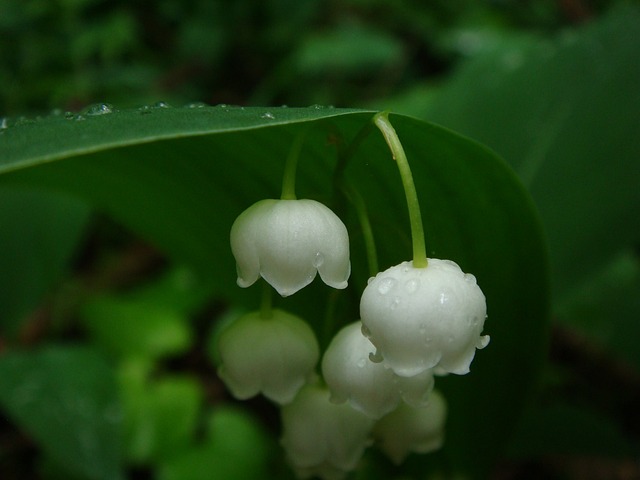Discover the Charm of Lily of the Valley: A Comprehensive Garden Guide
Introduction to Lily of the Valley
Welcome to our enchanting exploration of Lily of the Valley, a perennial favorite among garden enthusiasts. This guide delves into the captivating world of these dainty, bell-shaped flowers, known for their sweet fragrance and delicate appearance. Perfect for shaded garden spots, Lily of the Valley adds a touch of whimsy and an old-world charm to any landscape.
Botanical Overview
Understanding Lily of the Valley’s Botanical Roots
- Common Name: Lily of the Valley
- Scientific Name: Convallaria majalis
- Family: Asparagaceae A native to the cooler temperate regions of the Northern Hemisphere, Lily of the Valley thrives in shaded, woodland environments. Despite its delicate appearance, this plant is surprisingly hardy, spreading readily to form beautiful ground cover.
Varieties of Lily of the Valley
A Closer Look at Lily of the Valley Varieties
- Convallaria majalis var. rosea: A rare pink variant of the traditional white Lily of the Valley.
- Convallaria majalis ‘Albostriata’: Features leaves with striking white streaks, adding visual interest even when not in bloom.
- Convallaria majalis ‘Prolificans’: Known for its unique double flowers. Each variety brings its unique twist to the classic Lily of the Valley charm, offering choices for gardeners seeking variety in their shade gardens.
Planting and Growth Conditions
Ideal Growing Zones for Lily of the Valley
To successfully cultivate Lily of the Valley, understanding the appropriate growing zones is essential. This charming plant has specific climate preferences that ensure its flourishing growth and prolific blooming.
Hardiness Zones
- Optimal Zones: Lily of the Valley typically thrives in USDA Hardiness Zones 2 through 7. In these zones, the plant enjoys the cooler temperatures and the distinct seasonal changes it needs for dormancy and subsequent flowering.
- Temperature Tolerances: While Lily of the Valley prefers cooler climates, it’s remarkably hardy and can tolerate the winter temperatures of these zones. It’s the warmth of spring that signals it to start its growth cycle.
Climate Considerations
- Shade and Moisture: Regardless of the zone, Lily of the Valley requires shady to partially shady areas with well-draining soil. They do best in environments that mimic their natural woodland habitat – cool, moist, and shaded.
- Summer Heat: In the warmer edge of its growing range, particularly in zones 6 and 7, Lily of the Valley may struggle with the heat and humidity of summer. It’s crucial to ensure they have ample shade and moisture during these warmer months.
Adaptability and Microclimates
- Garden Microclimates: Even in zones slightly outside its preferred range, Lily of the Valley can thrive if planted in a suitable microclimate, such as a shaded north-facing garden or beneath a canopy of deciduous trees.
- Soil and Watering: Soil that retains moisture but allows excess water to drain is ideal. In drier zones or during dry spells, regular watering will help maintain the moist soil conditions that Lily of the Valley loves.
By selecting a suitable planting spot that aligns with the natural preferences of Lily of the Valley and considering your local climate and microclimate, you can enjoy the enchanting beauty of this perennial in your garden. As always, local nurseries and extension services can provide additional, region-specific advice for growing Lily of the Valley in your area.
Creating the Perfect Environment for Lily of the Valley
- Sunlight: Prefers partial to full shade, making it ideal for woodland gardens or shaded borders.
- Soil: Thrives in rich, well-draining soil, slightly acidic to neutral.
- Planting Tips: Plant pips (rhizomes) in early spring or fall, spacing them about a foot apart. Proper planting ensures a lush, healthy spread of these fragrant blooms.
Care and Maintenance
Tips for Nurturing Lily of the Valley
- Watering: Requires consistently moist soil, especially during dry spells.
- Fertilizing: Benefits from a light application of balanced fertilizer in early spring.
- Dividing: Divide clumps every 3-5 years to maintain vigor and control spread. Caring for Lily of the Valley is relatively low-maintenance, making it a great choice for both novice and experienced gardeners.
Benefits and Uses
The Many Delights of Lily of the Valley
- Aesthetic Appeal: Brings a charming touch to shady garden spots and is perfect for naturalistic plantings.
- Fragrance: The sweet scent is ideal for perfumes and aromatic garden settings.
- Cultural Significance: Known as a symbol of good fortune and humility, it’s popular in wedding bouquets and May Day celebrations. Lily of the Valley, while small in stature, offers big impact in garden design and cultural symbolism.
Potential Problems
Addressing Challenges with Lily of the Valley
- Pests and Diseases: Generally hardy, but watch for common garden pests and leaf spot diseases.
- Spread Control: Can become invasive, so it’s important to manage its spread in smaller gardens.
- Toxicity: All parts of the plant are toxic if ingested, so caution is needed in gardens accessible to pets and children. Understanding these aspects will help you enjoy these enchanting blooms safely and responsibly.
Conclusion
Lily of the Valley is a delightful addition to any shade garden, offering beauty, fragrance, and a rich history. With the right care and conditions, it can transform shaded areas into lush, fragrant retreats. Embrace the charm of Lily of the Valley and enjoy its timeless appeal in your garden.












You must be logged in to post a comment.